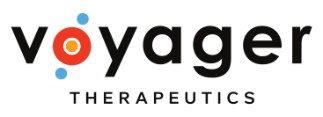Voyager Therapeutics Reports First Quarter 2022 Financial and Operating Results
Company to present new data at the American Society for Gene and Cell Therapy (ASGCT) Annual Meeting highlighting cross-species translatability and CNS tropisms of novel TRACERTM AAV9 and AAV5-derived capsids
Preclinical data to be presented at the ASGCT Annual Meeting to demonstrate reduction of tumor burden with vectorized HER2 antibodies; updated data from GBA1, vTau, SOD1 ALS programs also to be presented
Executed license option agreement with Novartis for target-specific access to next-generation TRACERTM AAV capsids
Appointed Alfred W. Sandrock, Jr., M.D., Ph.D. as Chief Executive Officer and Board Member
Cash runway into 2024
CAMBRIDGE, Mass., May 4, 2022 -- Voyager Therapeutics, Inc. (Nasdaq: VYGR), a gene therapy company developing life-changing treatments and next-generation adeno-associated virus (AAV) capsids, today reported first quarter 2022 financial and operating results.
“I’m thrilled to be leading Voyager as we advance our pioneering journey to help make AAV gene therapy a reality for patients by enabling safer, more targeted therapies,” said Alfred W. Sandrock, Jr., M.D., Ph.D., chief executive officer of Voyager. “Our license option agreement with Novartis further validates the TRACER capsid discovery platform, expands the range of programs that may utilize our novel AAV capsids, and demonstrates TRACER’s potential for offering future business development opportunities. We look forward to providing updates at the upcoming ASGCT Annual Meeting, including exciting new data on our AAV9- and AAV5-derived capsids demonstrating cross species translatability and unique CNS tropisms, as well as preclinical data highlighting advances in several of our pipeline programs.”
Data from Evolving TRACER AAV9- and AAV5-Derived Capsid Portfolio to be Presented at ASGCT Annual Meeting
| ● | Voyager continues to perform screening campaigns with its TRACER (Tropism Redirection of AAV by Cell-type-specific Expression of RNA) capsid discovery platform to identify additional proprietary AAV9- and AAV5-derived capsids and to refine capsids already identified to target multiple tissue and cell types. These |
